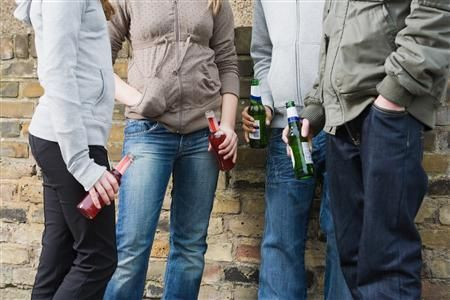Fake ID Use May Lead To Alcohol Use Disorders Later In Life; Two-Thirds Of College Students Could Be At Risk

It’s no surprise that high school and college students who do not meet the minimum legal drinking age (MLDA) use fake identification (ID) to purchase alcohol, but what can this type of behavior lead to down the road? Research reveals that students who use fake IDs are more likely to develop alcohol use disorders (AUD) later in life.
"It is important to note that heavier drinking patterns seem to be both a predictor and an outcome of false ID use," said lead author Amelia M. Arria, of the Center on Young Adult Health and Development at the University of Maryland School of Public Health. "In other words, false ID use might be 'adding fuel to the fire' among students who are already high-risk drinkers.”
According to the Centers for Disease Control and Prevention’s 2011 Youth Risk Behavior Survey, 39 percent of high school students said they had consumed some amount of alcohol in the past 30 days, 22 percent admitted to binge drinking, 24 percent said they had rode in a car with an intoxicated driver, and eight percent even admitted to driving while drunk.
"Alcohol use is extremely prevalent among underage youth in the United States — despite MLDA laws — and poses health and safety risks," Arria added. "Alcohol is easy for most youth to obtain, and false IDs comprise one of the factors contributing to alcohol's easy accessibility."
Researchers used a sample of 1,015 college students who admitted to drinking at least once before coming to college. Students were followed throughout their first four years of college and were questioned about fake ID use and alcohol consumption. They were also screened for how they viewed peer pressure, behavior during high school, relationship with family, and demographic factors such as sex, race, socio-economic status, and religion.
Of these students, 66.1 percent admitted to using a fake ID 24.1 percent of the times they had consumed alcohol before reaching the MLDA. Arria said that fake ID use “indirectly predicted increases in AUD risk over time through its contribution to increases in drinking frequency.”
"I think some of the most important findings to come out of this study have to do with how widespread this problem is," said Jennifer Read, of the State University of New York at Buffalo. "I was surprised that almost two-thirds of the students used false IDs. It will be interesting to see if this reflects something specific to this university or region in Dr. Arria's study, or if the use of false IDs is this ubiquitous across campuses in the U.S."
Fake ID use was related to high-risk drinking behavior in two major ways: students who use fake IDs tend to be heavier drinkers and usually increase how much and how often they drink after obtaining a fake ID. Arria concluded that use of a fake ID leads to more frequent drinking because it increases the accessibility of alcohol.
Although Arria and her colleagues call for increased parental awareness, they also stress the importance of policies used to curb youth fake ID use. The research team recommended mediation by policymakers in the form of fake ID confiscation at bars, clubs, and alcohol vendors, as well as ID-checking machines that can easily identify a fake.
"Just knowing how common the use of false IDs is suggests that this, among other things, is something that parents should be monitoring and also talking with their kids about," explained Read. "Both parental monitoring and communication have been shown to buffer against problem drinking outcomes in young adults, and this is another area where parents might be encouraged to engage in these practices."
Published by Medicaldaily.com



























